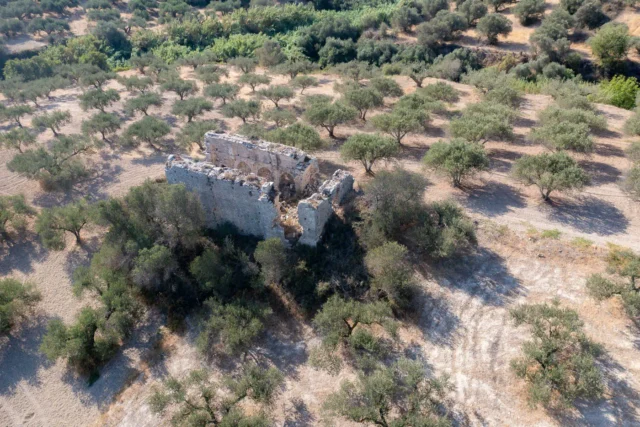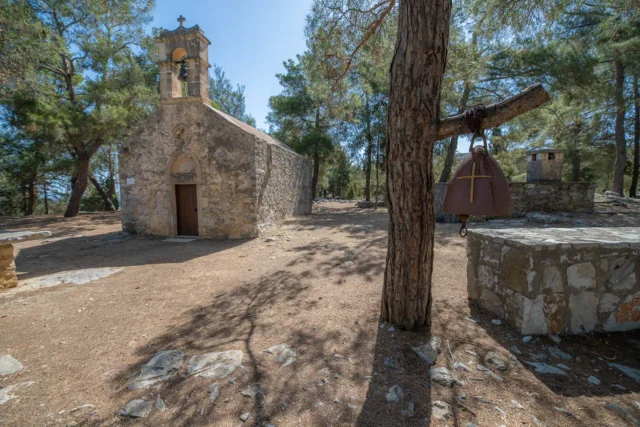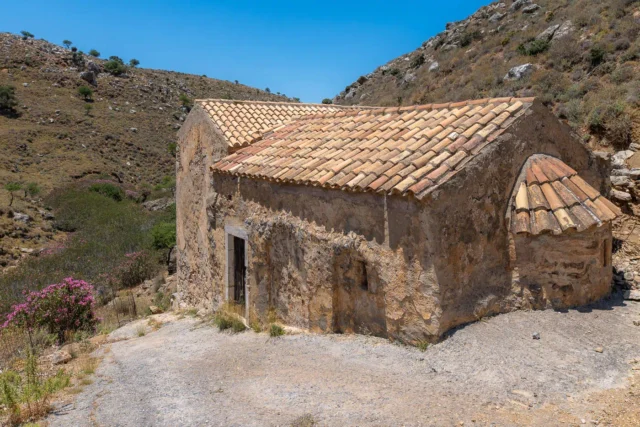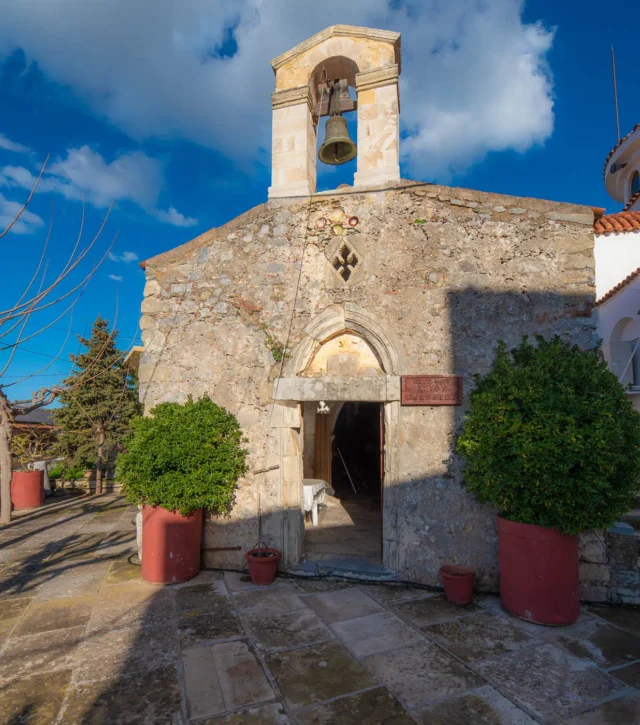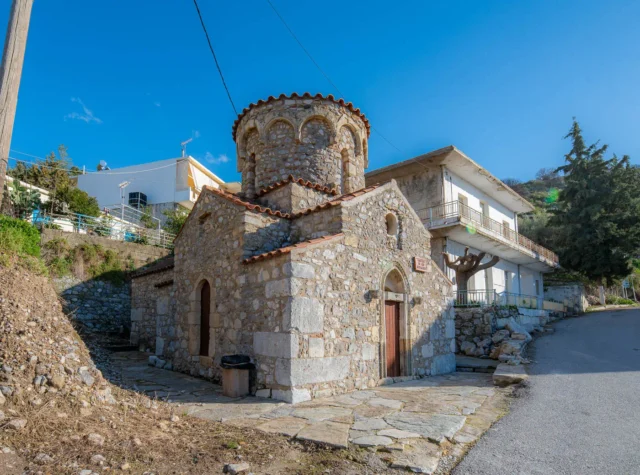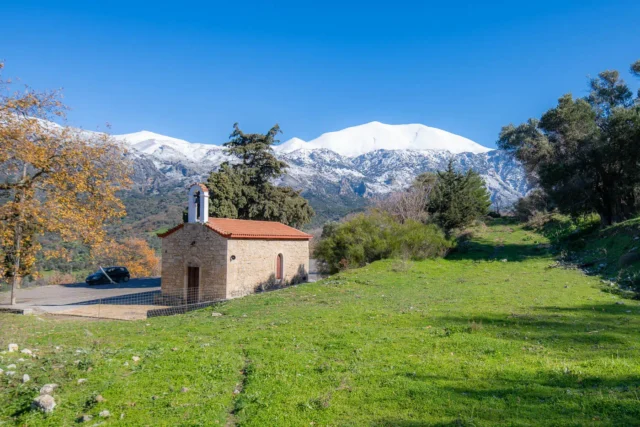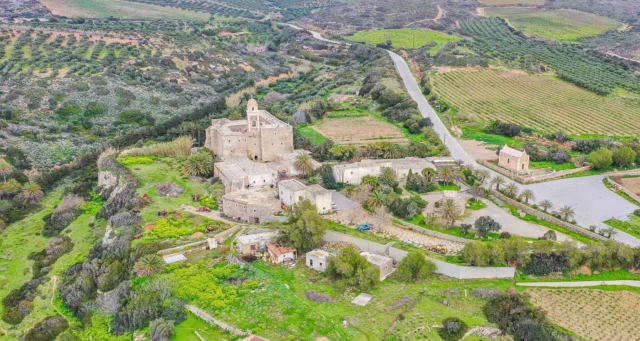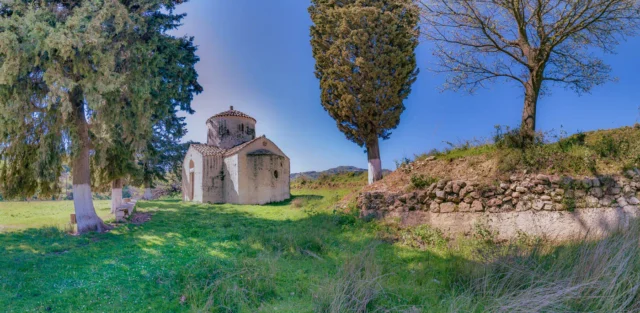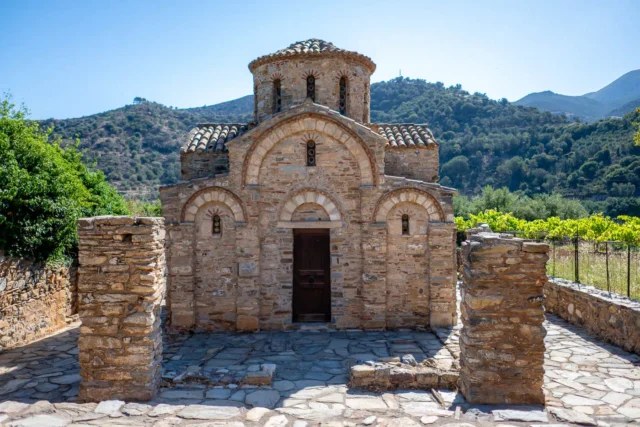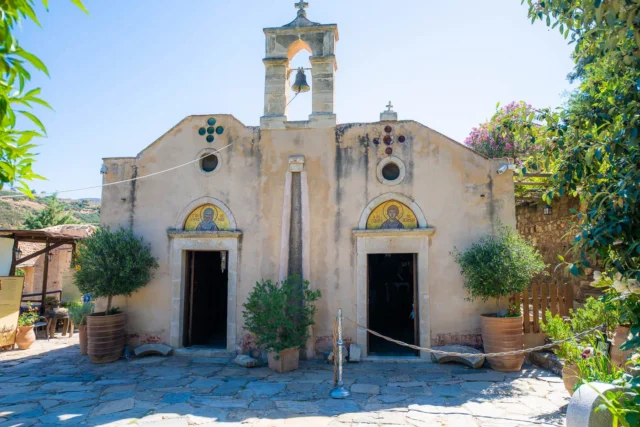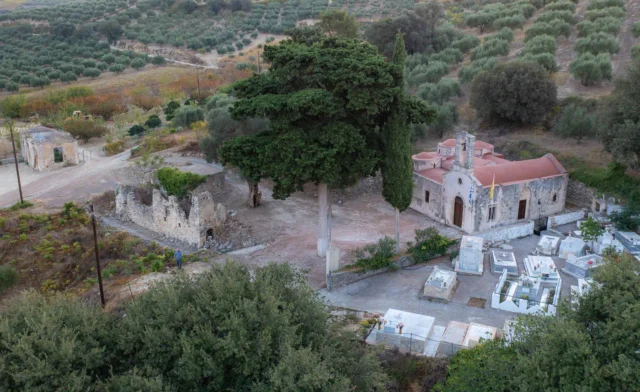95
listings found
Categories
Active filters:
Ruined Church of Michail Archangelos
Located in the fertile Kaminos valley, shared by Skalani, Prassa, and Kallithea villages in Crete, stands the ruined Church of Michail Archangelos. This Venetian-era structure, situated in the Kavousi area, was historically significant due to its proximity to a vital year-round spring. Once part of a medieval settlement, the church is now partially collapsed but remains more intact than the nearby ruined Christos church. Its state underscores the impact of time and possibly seismic events, highlighting the region's vulnerability, as evidenced by the 2021 Arkalochori earthquakes, necessitating preservation efforts for Cretan cultural heritage.
Church of Michail Archangelos
The Church of Michail Archangelos: A Byzantine Monument in Arkalochori, Crete Located in the old cemetery of Arkalochori, a short distance from the village, the Church of Michail Archangelos stands […]
Panagia Mavridiani in Meronas
Panagia Mavridiani, or Church of the Nativity of Mary, stands near Meronas, Crete, with origins in the 13th century, expanded in the 15th and 16th. The church features two aisles; the older, 13th-century section displays Byzantine architecture with a domed, single-nave design and 13th-century fresco remnants. The northern aisle, dedicated to Saints Constantine and Helen, was added in the 16th century. Frescoes, though partially lost, portray scenes like the Nativity of Mary, Annunciation, Ascension, and Second Coming, alongside saints such as Gregory, Romanos, and Panteleimon. Restored in 2012, it is a testament to Byzantine artistic and religious heritage.
Moni Asomaton monastery
Located in the Amari Valley, 35 km from Rethymno, this monastery is dedicated to the Synaxis of the Archangels. The katholikon (main church) represents a unique Franco-Byzantine style. Originally a 14th-century barrel-vaulted church built on 10th-century foundations destroyed in the 1303 earthquake, it was later transformed into a cross-in-square church. Historically, it was linked to the Varouchas family, served as the seat of the Bishop of Lampe, and became an agricultural school in 1927. After nearly a century, it officially reopened in May 2024.
Agios Georgios in Toupaki Episkopi
Located on Toupaki hill near Episkopi, this single-nave, barrel-vaulted church dates to the early 15th century. It once served as the katholikon of a monastery linked to Agarathos Monastery. Notable architectural features include a Venetian doorway with a serrated lintel and a built-in Renaissance iconostasis. The interior is renowned for its exceptional 15th-century frescoes, stylistically linked to Manuel Fokas or his circle. The iconographic program includes a Christological cycle, the Last Judgment, and scenes from the life of Saint George, such as the dragon-slaying. It also uniquely depicts Zosimas giving communion to Saint Mary of Egypt. Latin inscriptions from past visitors are present on the walls.
Panagia Limniotissa in Episkopi
Located near Episkopi, Heraklion, this is an 11th-century, single-nave, cross-in-square Byzantine church. Its interior features three distinct layers of frescoes from the 11th, 13th, and 14th centuries, including the Virgin Mary Nikopoios. During the Venetian period, it was a women's monastery, receiving bequests from figures like Niphon Notaras. By the 17th century, historical documents confirm it became a metochi, or dependency, of the nearby Agarathos Monastery.
Moni Kallergi
Moni Kallergi, dedicated to Saint John the Baptist, is a historical monastery southeast of Smari, Crete, near Kastelli. Built during the Venetian era, it rests on Minoan-era ruins, evidenced by tombs and artifacts. Records link it to the Kallergis family. Though damaged during Ottoman rule and a 1931 fire, it was restored in the 20th and 21st centuries. Now an active monastery under the Metropolis of Arkalochori, it includes a restored central building, a two-aisled church dedicated to Saint George and Saint Spyridon, and a chapel for the New Martyrs of Crete. The site showcases a blend of Minoan and Venetian history, with ongoing services and visitor access.
Toplou monastery
Toplou Monastery, on Crete's eastern tip, is a fortified monastery showcasing Byzantine and Venetian architecture. Dating back to the 14th century with 17th-century fortifications, it played a key role in Cretan resistance during Ottoman rule. The monastery features a two-aisled basilica dedicated to the Virgin Mary, housing a remarkable collection of Byzantine icons and frescoes, and a museum with religious artifacts and folk art. Beyond its religious and historical significance, Toplou Monastery is known for its agricultural heritage, producing high-quality organic wine and olive oil. It stands as a cultural landmark, attracting visitors with its history, architecture, and scenic location, while remaining an active monastery and cultural center.
Agios Nikolaos, and Transfiguration of Christ churches in Elenes
In the Amari Valley of Crete, the village of Elenes features the Church of Agios Nikolaos, a dual-aisled Byzantine structure dedicated to St. Nicholas and St. Anne. The church is significant for its extensive cycle of 13th-century frescoes, which portray scenes from the life of Christ and other saints in a style marked by expressive figures and rich colors. Nearby are the ruins of another Byzantine church, dedicated to the Transfiguration of Christ, which also retains fragments of its frescoes.
Agia Paraskevi in Kalogerou
Agia Paraskevi, near Kalogerou in Amari, Crete, is a 16th-century Venetian-era church with a free cross floor plan and a dome on a cylindrical drum. Reconstructed in 1888, it retains original Venetian frescoes, notably in an arcosolium depicting Christ and kneeling figures, including a Georgios Chortatzis. The church's architecture and frescoes, along with the Chortatzis burial, highlight Venetian influence in Crete. The identity of Georgios Chortatzis, possibly linked to archons or a playwright, remains debated. The church is active and open to visitors.
Panagia ton Angelon in Fradio
Panagia ton Angelon, a 15th-century Catholic church in Fradio, Crete. Gothic influences and monastery ruins mark this historic site.
Church of Panagia (The Virgin Mary)
The Church of Panagia (The Virgin Mary) is located in the village of Fodele, Crete, on the site of a ruined 7th-century three-aisled basilica. The current church dates to the […]
Agios Panteleimon monastery in Fodele
Located in Fodele, 25 km from Heraklion, this Greek Orthodox monastery dates to the early Ottoman period, possibly after 1539. Its fortress-like architecture combines Byzantine and Venetian styles. It served as a rebel shelter during Cretan uprisings against the Ottoman Empire, notably the 1866-1869 revolt under Abbot Neophytos Pediotis. Largely demolished in 1972, its legacy was preserved by Archimandrite Meletios Apostolakis, with restoration starting in 2004. The two-aisled basilica houses 14th- and 17th-century icons.
Panagia Kera Eleoussa in Kitharida
Panagia Kera Eleoussa in Kitharida, near Heraklion, Crete, is a striking example of Byzantine ecclesiastical architecture. Serving as the katholikon of the Panagia Eleoussa monastery from the 11th century (with 12th/13th-century narthex and 15th-century reconstruction), it operated through Venetian and Ottoman periods. The church comprises three domed aisles dedicated to Agios Charalampos, the Dormition of the Theotokos, and Agios Fanourios. The unusual apses face north, and its exterior displays circular plaques with paintings, including a notable Spanish plaque with "Ave Maria gratia plena." Today, it remains alongside ruined cells and a roofless school (1841-1866)









